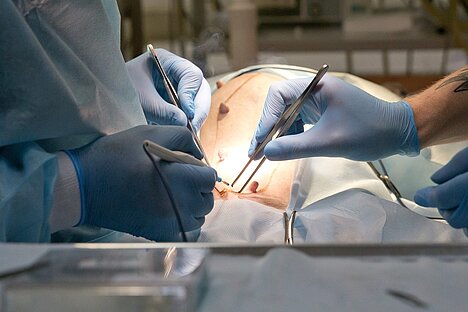Balloon dilation

You may have heard of balloon dilatation, a method of widening constricted blood vessels. But did you know that this technique can also be used in dogs? In this article, you will find out what balloon dilation is, when it is useful in dogs and how it is performed.
What is balloon dilation?
Balloon dilation is a minimally invasive procedure in which a small balloon is inserted into a narrowed blood vessel. The balloon is then inflated to dilate the vessel and improve blood flow. The balloon is then removed again. Balloon dilatation can be used for various diseases that lead to a narrowing of the blood vessels, such as arteriosclerosis, heart valve stenosis or pulmonary stenosis.
When is balloon dilatation useful in dogs?
Balloon dilatation can help dogs suffering from pulmonary stenosis. This is a congenital heart malformation in which the pulmonary valve, which connects the heart to the lungs, is narrowed. As a result, the heart has to exert more force to pump the blood through the valve. This can overload the heart and lead to symptoms such as shortness of breath, weakness or fainting. If pulmonary stenosis is not treated, it can lead to heart failure or sudden death.
Balloon dilatation can reduce the narrowing of the pulmonary valve, thereby reducing the strain on the heart and improving the dog's quality of life. Balloon dilatation is a gentle alternative to open heart surgery, which is associated with higher risks and costs.
How is balloon dilation performed in dogs?
Balloon dilatation in dogs requires general anesthesia and special equipment. The vet inserts a thin catheter with an inflatable balloon at the tip into the right atrium of the heart via a vein. The catheter is pushed through the pulmonary valve with the help of X-ray images or ultrasound. The vet then inflates the balloon to dilate the valve. The procedure is repeated several times until the desired width is achieved. The catheter is then removed and the wound closed.
Balloon dilatation usually takes about an hour and requires a short hospital stay. Most dogs recover quickly from the procedure and show a marked improvement in their symptoms. The complication rate is low, but bleeding, infection or damage to the valve can occur.
Balloon dilatation is an effective and gentle treatment method for dogs with pulmonary stenosis. It can prolong your dog's life and improve its quality of life.
The authors assume that a veterinarian should be consulted if an animal is ill and that medication should only be taken after consultation with a doctor or pharmacist. Only an individual examination can lead to a diagnosis and treatment decision.
We help you find the nearest vet → This way